Scientists are tracking the mysterious "uranium cube" remaining in the Nazi nuclear reactor
Professor Timothy Coase of the University of Maryland mysteriously received a radioactive cube one day a few years ago. This is a mysterious gift. A crumpled note was sent along with this uranium cube, which read: "From Germany, taken from the nuclear reactor Hitler was trying to build. A gift from Ninge."
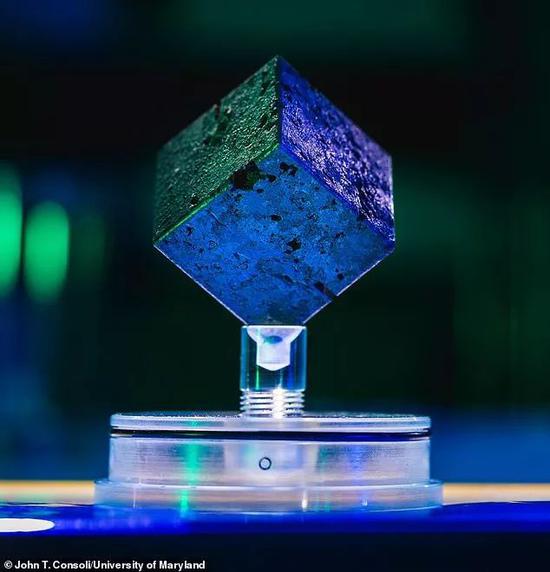
Researchers are tracking hundreds of radioactive cubes located in the center of nuclear reactors built by Nazi scientists
The story begins with the nuclear reactor built by Teller. At the end of World War II, the reactor was dismantled by the US military. The 664 radioactive cubes previously buried underground by the Nazis were also shipped to the United States.
Although the amount of radioactive material in the nuclear reactor was not enough to allow it to operate at full capacity, the team led by Professor Kos found in the Nazi documents that there was still enough radioactive material in other parts of Germany to allow the nuclear reactor to reach full capacity.
These additional radioactive cubes were under the control of another research team, but if scientists at the time could merge all their own uranium into one place, they would be able to go one step further.
The extra 400 mysterious cubes flowed to the black market after the war, and most of the cubes taken out of the reactor were shipped to the United States, and most of them disappeared over time.
After receiving one of the cubes, Professor Coase's curiosity was aroused. He teamed up with Mariam Hibbert, a fellow of the University of Maryland, to investigate the history of the nuclear reactor. Since then, he has been working on exposing the history of the nuclear reactor and tracing the rest of the remaining parts. .
This B-VIII nuclear reactor was built by Nazi scientists in Berlin in the late World War II, but was eventually moved to the town of Heigollo in southwestern Germany. The Nazis built a small laboratory at that time, which was only stored under the castle church Potatoes and beer in the cellar.

Today, the remainder of this underground facility is open to the public for exhibitions, and it has been converted into an "Atomkeller" (meaning atomic cellar) museum.
The German scientists involved in the construction of this nuclear reactor also included the theoretical scientist Werner Heisenberg, one of the founders of quantum mechanics, who was eventually captured by the Allied forces in 1945.
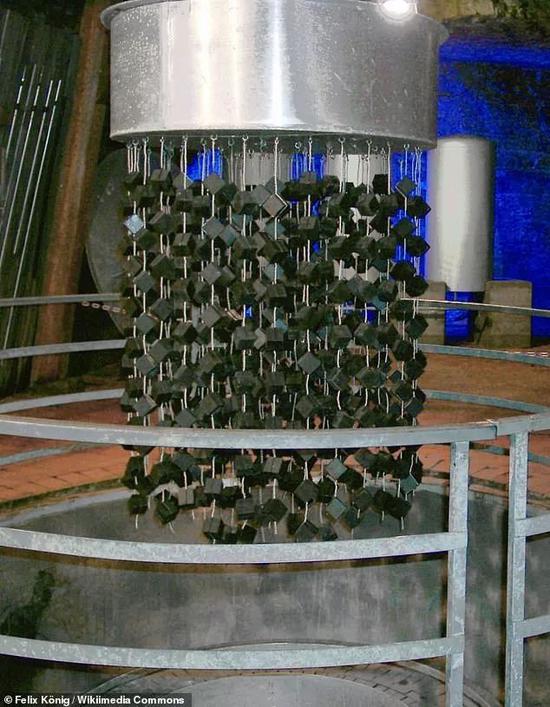
The "heart" of the reactor is composed of 664 uranium cubes, each side is 5 cm long, as is the one held by Professor Kos. They are arranged in a chandelier shape and are connected to each other by aerial cables.
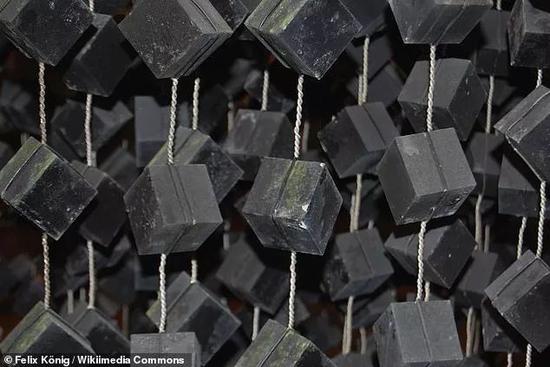
"Chandeliers" made of uranium cubes are suspended in heavy water in order to regulate the progress of nuclear reactions
The core of the reactor is wrapped in a metal-coated graphite shell and placed in a water tank made of concrete. The "chandelier" made of uranium cubes is suspended in heavy water in order to regulate the progress of the nuclear reaction.
The core of these cube networks is the neutron radiation source. As the neutrons bombard the uranium 235 atoms in the cube, these atoms will split, releasing a lot of energy and three neutrons, and these three newly generated neutrons The son will bombard three other atoms ... a lifetime of two, two of three, and a chain reaction is formed.
The energy released by nuclear reactions is as many as millions of times that of any chemical reaction. The energy produced by nuclear fission can in turn convert water into water vapor, which in turn drives the turbine and generates electrical energy.
This experiment was the Nazi ’s last and most recent attempt to make a nuclear reactor capable of maintaining its own operations. However, there was not enough uranium in the core of the nuclear reactor at that time to achieve this goal.
To achieve the critical mass required for a self-sustaining nuclear reactor, the uranium cubes required must be at least 1.5 times the existing number. Although there are not enough 664 cubes in Haigorloch, there were actually another 400 radioactive cubes elsewhere in Germany at that time, owned by another research team. If these cubes could be added together, the Nazi scientists would have enough uranium to at least allow the nuclear reactor in Haigorloch to be fully operational.
If the Germans could combine resources at the time instead of being held by two competing research teams, they might really be able to build a functioning nuclear reactor. German nuclear research projects were dispersed and competing; and in Lai Under the leadership of General Sly Groves, the Manhattan project in the United States is a concerted effort, and this is the biggest difference between the nuclear research projects in Germany and the United States.
However, there were other factors that prevented the success of the German nuclear test.
Even if another 400 cubes were actually transported to Haigorloch and put into the reactor, German scientists still needed more heavy water for the reactor to function properly. As early as 1943, the Allied forces blew up the Nazis. The heavy water production facility inside the Norwegian Vimork Hydropower Plant, the Norwegian Resistance Army later sank a freighter that transported all the remaining heavy water from the power plant to Germany.
So far, although Germany is the origin of nuclear physics and nuclear research is almost two years earlier than the United States, until the end of the war, Germany failed to pose an imminent nuclear threat.
When Professor Coase received the mysterious cube in 2013, he couldn't help but be surprised. With the help of rough black and white photos in the history book, he recognized what it was. This dense uranium cube weighed about 2.3 kilograms. When he was given it, he was wrapped in a brown paper towel and was packed in a small cloth lunch bag.
In terms of its size, its weight is particularly striking. Every time an uninformed person's reaction when they first picked it up, it was particularly interesting. The first thing Professor Coase had to do was to determine whether the cube really came from Hegorloch's nuclear reactor.
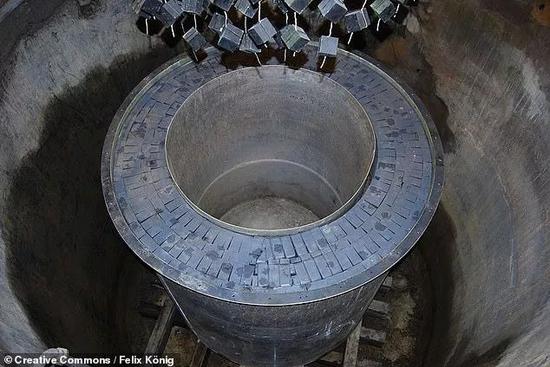
The core of the reactor is wrapped in a metal-coated graphite shell and placed in a water tank made of concrete. "Chandeliers" made of uranium cubes are suspended in heavy water in order to regulate the progress of nuclear reactions
The surface of this cube is covered with dents, which is consistent with the early uranium treatment technology of the 1940s. The grooves on both sides may be used to tie the cables. The researchers also measured the gamma-ray energy released by the cube to confirm whether it was indeed made of natural enriched uranium, but the gamma-ray released by the cube was not released by the radioactive isotope cesium 137 The kind that shows that it has never been used in a normally operating nuclear reactor.
The crumpled note that was sent to Kos with the cube read: "Gift from Ninge", Robert Nininger (the name on the note seems to be misspelled, more than the correct spelling) N) was one of the experts who participated in the Manhattan project to manufacture the first atomic bomb in the United States.
According to Ninge's widow, he did hold a uranium cube, which he later transferred to a friend. After that, the cube might change hands several times, and finally reach the hands of Professor Kos.
Near the end of the war, the US military, like other allies, launched an operation to find and use Nazi scientific research projects. The German nuclear research project was the key target of this operation, with the mission code "Alsos".
On April 20, 1945, Operation Alsos occupied the town of Haigorloch and disassembled the nuclear reactor. The soldiers discovered that the Nazi scientists also had hidden parts of the nuclear reactor and related data.
They found a welded reel with documents and three barrels of heavy water in the pit, and after occupying the town for a week, they found a buried 1.4-ton uranium cube in the field around the town of Haigorloch, and then These cubes were shipped to the United States, and how they ended up eventually became a mystery.
Scientists are now in action to try to track the whereabouts of the other cubes in the Hygorloch reactor.
These cubes fell into the hands of various people across the country. I don't know how many of them were sent by the hands, nor how the rest fell.
In addition to tracing the cubes sent to the United States, scientists are also anxious to know the final fate of another 400 cubes. These cubes fell on the European black market after the war and were resold secretly as valuable treasures.
Ten cubes have been located, one of which is now held by Harvard University and the other is owned by the Smithsonian Institution in Washington.
Scientists are encouraging insiders to contact them via e-mail, hoping to talk to as many people as possible who have been in contact with these cubes.
Professor Coase is now ready to lend his cube to a museum to give the public a glimpse of its true content, which may be a good way to help find the remaining mysterious cubes.
POLYKEN 934 is a Cold Applied Tape coating system designed for the corrosion protection of field joints, fittings, and specialty piping. The highly conformable backing and thick, aggressive adhesive also make it the ideal repair system for all types of main line coatings. The POLYKEN 934 tape with very tacky adhesive has a release plastic liner to enable proper unwinding of the roll. Whether used as a double wrap system or as a single wrap with a mechanical layer, the POLYKEN 934 tape coating system is universally specified in the oil, gas and water industries.
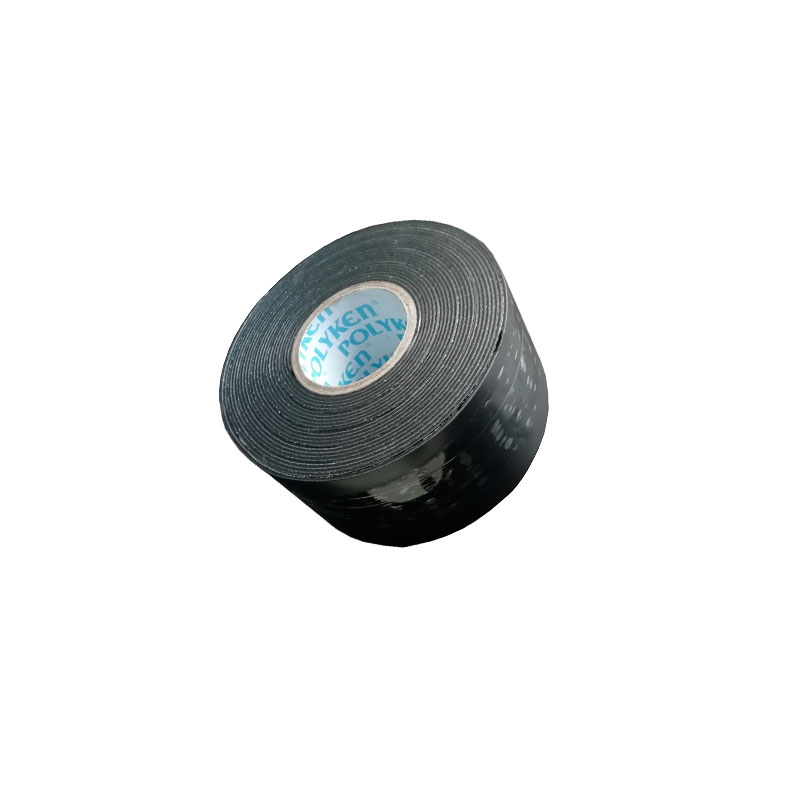
Polyken 934 Anticorrosion Tape
Polyken 934 Anticorrosion Tape,Corrosion Protection Tape,Anticorrosion Polyethylene Tape,Anti Corrosion Adhesive Tape,anti corrosion self adhesive tape
Jining Qiangke Pipe Anticorrosion Materials CO.,Ltd , https://www.pipe-wrap-tape.com
